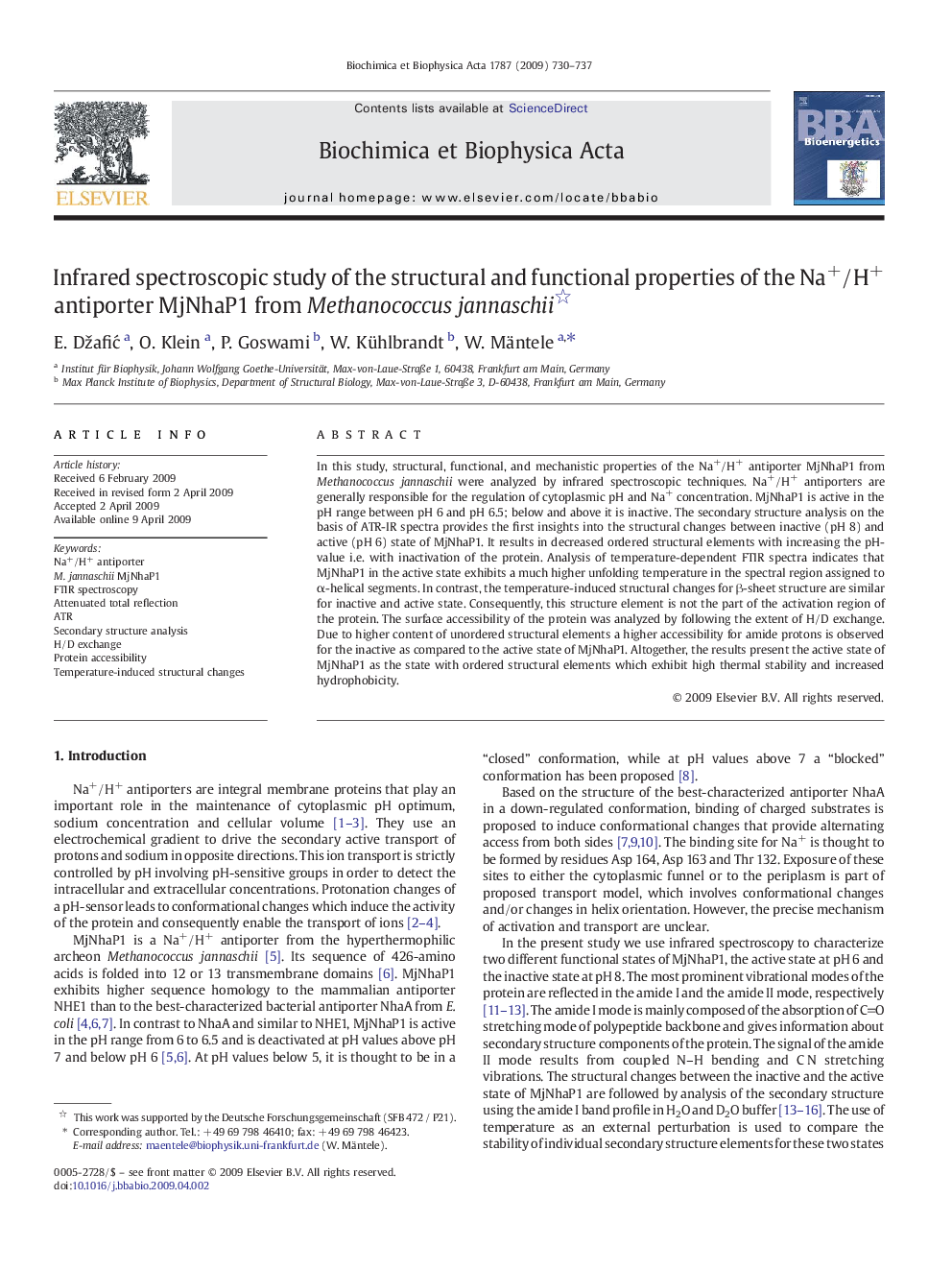| Article ID | Journal | Published Year | Pages | File Type |
|---|---|---|---|---|
| 1943108 | Biochimica et Biophysica Acta (BBA) - Bioenergetics | 2009 | 8 Pages |
In this study, structural, functional, and mechanistic properties of the Na+/H+ antiporter MjNhaP1 from Methanococcus jannaschii were analyzed by infrared spectroscopic techniques. Na+/H+ antiporters are generally responsible for the regulation of cytoplasmic pH and Na+ concentration. MjNhaP1 is active in the pH range between pH 6 and pH 6.5; below and above it is inactive.The secondary structure analysis on the basis of ATR-IR spectra provides the first insights into the structural changes between inactive (pH 8) and active (pH 6) state of MjNhaP1. It results in decreased ordered structural elements with increasing the pH-value i.e. with inactivation of the protein. Analysis of temperature-dependent FTIR spectra indicates that MjNhaP1 in the active state exhibits a much higher unfolding temperature in the spectral region assigned to α-helical segments. In contrast, the temperature-induced structural changes for β-sheet structure are similar for inactive and active state. Consequently, this structure element is not the part of the activation region of the protein. The surface accessibility of the protein was analyzed by following the extent of H/D exchange. Due to higher content of unordered structural elements a higher accessibility for amide protons is observed for the inactive as compared to the active state of MjNhaP1. Altogether, the results present the active state of MjNhaP1 as the state with ordered structural elements which exhibit high thermal stability and increased hydrophobicity.
